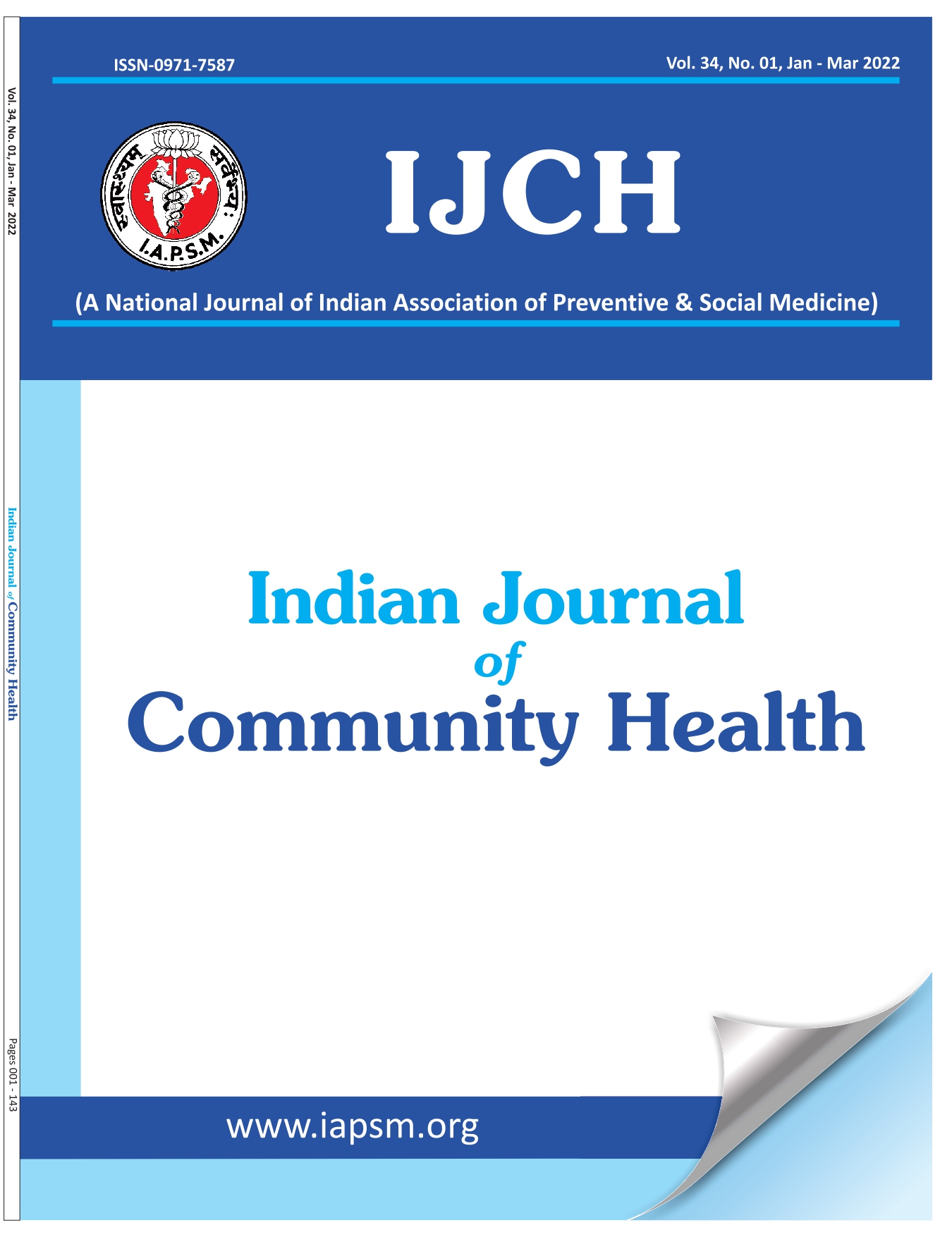Quality of Life (QOL) among the Elderly in Rural Dehradun
DOI:
https://doi.org/10.47203/IJCH.2017.v29i01.007Abstract
Background: The assessment of quality of life (QOL) is a particularly important public health tool for the elderly in an era when life expectancy is increasing. Aims & Objectives: To measure Quality of Life among the elderly and identify its determinants. Material & Methods: This cross-sectional study was conducted on 220 elderly residing in rural areas of Dehradun district after taking written informed consent. Multistage random sampling was done, WHOQOL-OLD questionnaire was used to assess the QOL and data were analyzed by SPSS-22. Results: 55.5% subjects were females and the rest were males. Maximum percentage of respondents were in the age group of 66-75 years (46.4%). The mean (±SD) of transformed total QOL score (TTS) was 57.76 (±10.97). The mean score of facet V (death and dying) was the highest (82.58) and the lowest mean score was observed in facet VI, intimacy (44.83). Overall QOL scores were found to be associated with education and financial dependency. Variation was observed between the determinants of QOL facet scores. Conclusion: Quality of life is a multidimensional concept. Education and financial dependency were found to be the possible determinants of QOL. More extensive studies are recommended to identify other factors affecting QOL.
Downloads
Downloads
Published
How to Cite
License
Copyright (c) 2017 Indian Journal of Community Health

This work is licensed under a Creative Commons Attribution-NonCommercial-NoDerivatives 4.0 International License.





